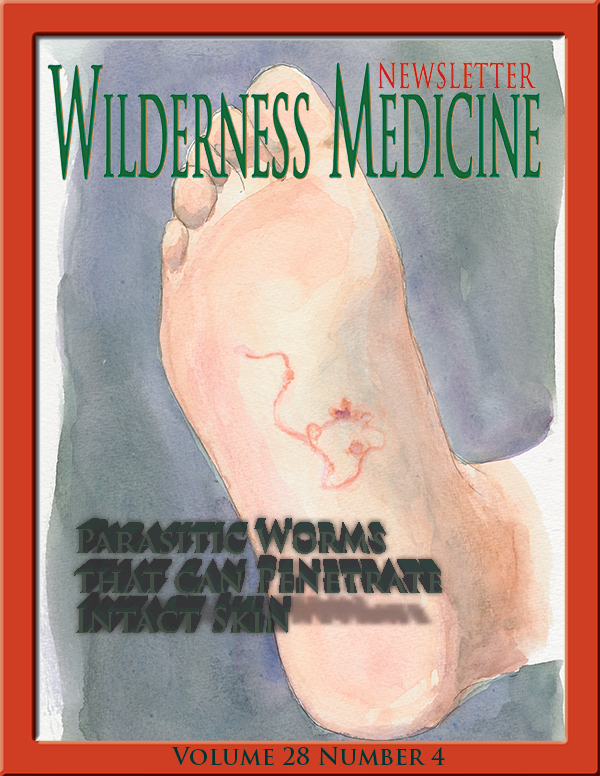Parasitic Worms that can Penetrate Intact Skin

ISSN: 1059-6518
Parasitic worms and shoes – all about why, to stay healthy, we wear shoes.
By Frank Hubbell, DO
Illustrations By T.B.R. Walsh
The intention of this article is to explain why you should never, ever walk around the great outdoors barefoot, and why you should never, ever lie on moist ground exposing unprotected bare skin to the soil.
The reason is actually quite simple and a bit disgusting. There are parasitic worms that can live in warm, moist soil. When they come into contact with your skin, they will latch on to you, make a hole in your intact, healthy skin, and burrow into you. Once inside, they will proceed to their target organ, usually your intestinal tract, and parasitize you. As their unwilling host, you become sick and are now part of their life cycle.
THE WORLD OF HELMINTHES – PARASITIC WORMS
Helminthes are parasitic worms in the Kingdom of Animalia.
Within this Kingdom there are two Phylum of parasitic worms, Platyhelmenthes and Nematoda.
The Phylum of Platyhelmenthes has two Classes of parasitic worms, Cestodes – tapeworms and Trematodes – flukes and flatworms.
The Phylum of Nematoda contains one Class of parasitic worms, Nematoda – roundworms.
There are many ways to divide up the world or parasitic worms. One way to distinguish them is by how they enter and parasitize their host. Most commonly, these parasitic worms gain entrance via the alimentary canal when you consume contaminated food or water. The other way is by penetrating intact, healthy skin.
In this article we are going to review the parasitic worms that gain access to their host by directly penetrating intact, healthy skin.
Parasitic Nematodes that enter the body by penetrating intact skin:
Necator americanis /Ancylostoma duodenale – hookworm
Ancylostoma braziliense – cutaneous larva migrans
Strongyloides stercoralis – threadworm
Parasitic Trematodes that enter the body by penetrating intact skin:
Schistosomiasis – swimmer’s itch
All of the other parasitic worms: cestodes – tapeworms, nematodes – round worms, and trematodes – flatworms and flukes, enter by ingestion of the infectious parasite in food or water.


